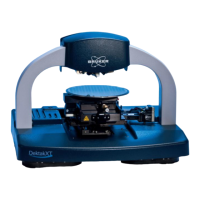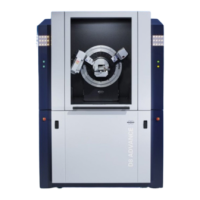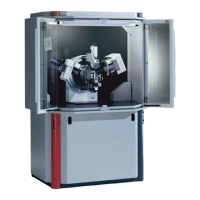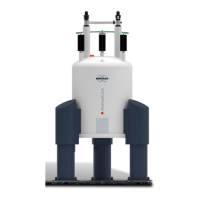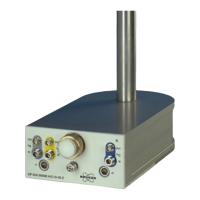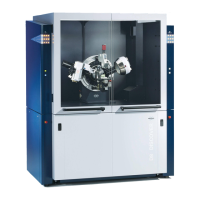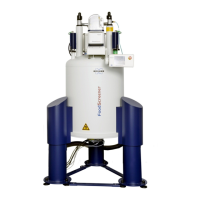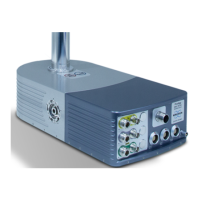D2 PHASER User Manual
DOC-M88-EXX141 V5 – 01.2015 9
Silicon strip detector LYNXEYE
The LYNXEYE is a 1-dimensional detector for X-ray powder diffraction, based on Bruker AXS
compound silicon strip technology (fig. 3, 28, 42, 43). Compared to a single point detector, the
LYNXEYE considerably increases measurement speed, without losses in resolution and peak shape
quality. D2 PHASER systems equipped with LYNXEYEs record typical powder patterns several times
faster (approx. factor of 100 to 150) than using a point detector like scintillation counter detectors with
identical data quality.
The LYNXEYE is based on the silicon strip detector technology. The 192 strips of the sensor work as
192 individual detectors which measure simultaneously. Most of these stripes are used. The
geometrical principle of the goniometer causes that sometimes some few sensor stripes at the border
of the chip cannot be active.
This technology allows operation at count rates much higher than those typically possible with
gaseous detectors while using all benefits. Together with innovative controller electronics, optimum
tuning of the silicon strip sensor to the requirements of the X-ray energy from 6keV to 15keV is
provided. The factory settings are optimized for Cu-K.
The LYNXEYE fits perfectly for D2 PHASER systems. There is no need for counting gas, cooling
water or liquid nitrogen, making the LYNXEYE a compact, robust and maintenance free detector.
XFlash detector
The XFlash is an energy dispersive semiconductor detector. The X-ray radiation emitted by the
sample is collected in the detector which works according to the drift chamber (SDD) principle. Within
the active volume of the detector, each X-ray quantum induces a local space charge which is
registered by an HV electrode and causes a charge burst proportional to the initial X-ray quantum
energy. This pulse is amplified and transferred to the digital signal processor. Its output signals are
collected as spectra and transferred to the measuring computer via the RS232-interface. The
semiconductor detector is cooled electro-thermally for noise minimization.
Due to its excellent energy resolution, the XFlash detector can be used as monochromator for XRD
measurements: By defining an energy range corresponding to the K
signal, only X-ray energies
within this particular region of interest (ROI) will be used for the diffractogram while other wavelengths,
like fluorescence from the sample, will be excluded. This results in diffractograms with excellent
signal-to-noise ratio, usually only obtained by crystal monochromators or multilayer mirrors.
In addition, the XFlash allows for simple qualitative element analyses by means of energy dispersive
X-ray fluorescence analysis and hence expands the overall analytic perfomance of the D2 Phaser
beyond XRD purposes.
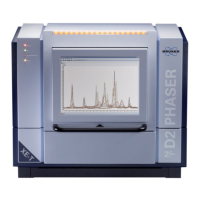
